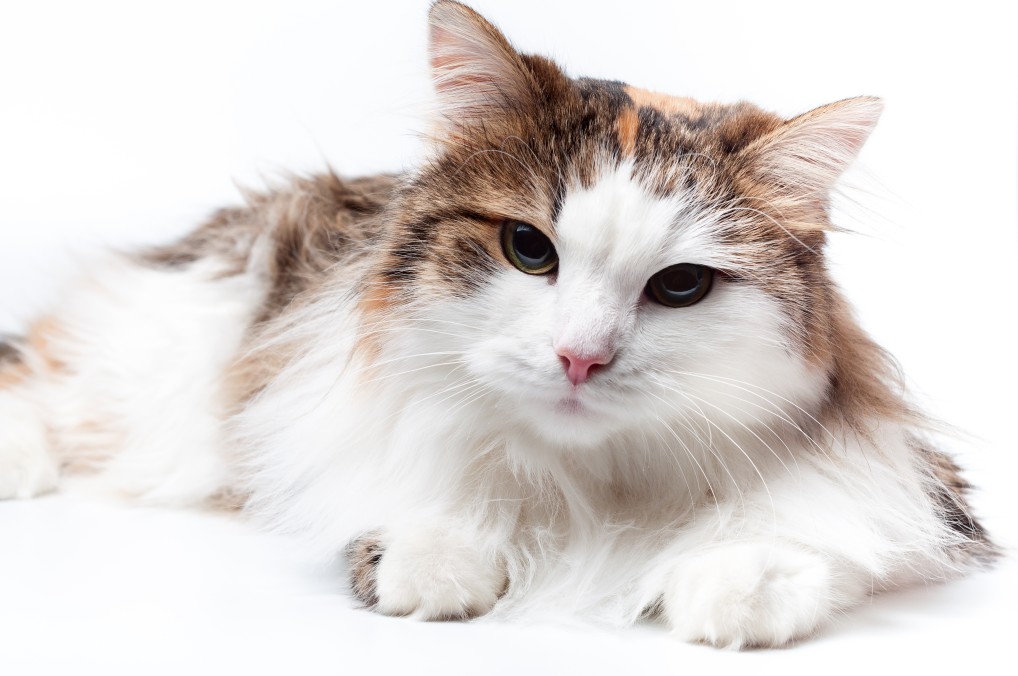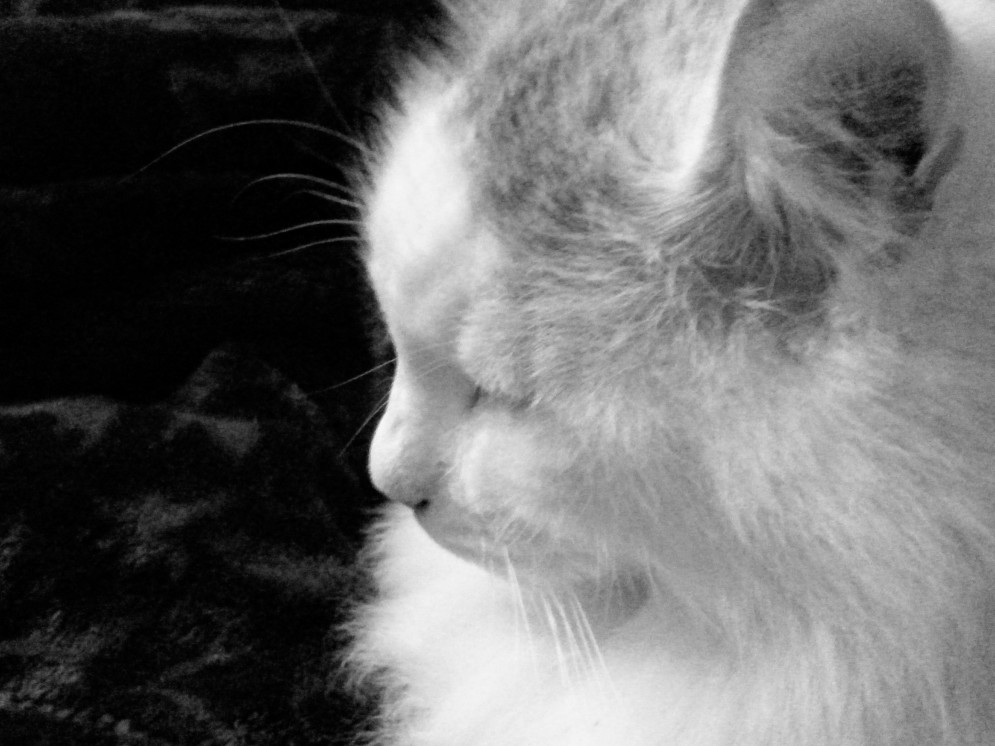Are you looking to get a new cat soon? Great! You may want to consider a purebred cat. There are many breeds that can be found in this country, each with its own characteristic appearance and temperament and history.
Think carefully about what you would characteristics you would like to see in your new companion. Perhaps you would care to consider:
Turkish Angora
Beautiful and rare, the elegant Turkish Angora is considered a national treasure in its home country of Turkey. The breeds name came from the former Turkish capital, Angora, now called Ankara.
The Turkish Angora probably originated in the mountains of Turkey. This graceful breed may have descended from the Manul cat, which was a small cat domesticated by the Tartars. Turkish Angoras can be traced back in European writings to 16th century France.

Turkish Angora
The breed was enormously popular with French and British nobility in the 1700s. Marie Antoinette and King Louis XVI as well as King Louis XV are said to have been Turkish Angora fanciers.
The breed almost disappeared entirely in the early 1900s due to indiscriminate interbreeding with Persians to the point where nearly all longhaired cats were referred to as Angoras. Fortunately, Turkish breeders continued controlled breeding of this lovely breed.
In the 1950s, American servicemen discovered Turkish Angoras at the Ankara Zoo. These servicemen reintroduced the Turkish Angora to cat fanciers everywhere. All modern Turkish Angoras must trace their ancestry to Turkey.
Turkish Angoras, though highly prized, are unfortunately rather rare even in their lands of origin. They are loving, playful and very adaptable to many situations. This breed is very friendly and outgoing. They coexist well with dogs. Turkish Angoras are often the first to greet guests and are known to stick around to visit with them.
Turkish Angoras make outstanding family pets. This breed is also famous for its tendency to bond strongly with one special human. Once that bond is formed, this cat will be an always present, always affectionate companion.
Elegant and graceful, this breeds' most distinguishing feature is its beautiful coat. White is the most popular color but many others colors are available and are becoming more popular with time. The Turkish Angoras long haired, single layered coat is soft and silky. It rarely mats or tangles and so requires little grooming.
Most owners do use a fine toothed comb their cats a couple times a week anyway, to get rid of loose hair and reduce the likelihood of hairballs.
Being a natural breed, they are also very healthy cats.
These cats are highly intelligent and need to have lots of interaction with their people or they tend to get bored. It's a good idea to have another lively feline playmate for The Turkish Angora to play with when you are away. Otherwise, she is liable to get into mischief.
The Turkish Angora cat is a breed whose cheerful ways continue to charm people every day. Give the Turkish Angora cat a closer look. This breed is considered the most outgoing and affectionate of all cat breeds.
This cats' grace and energy would make it a lovely and entertaining pet. This cat may be exactly what you are looking for in a new companion.
Turkish Van
A rare and ancient breed of cat, the Turkish Van was depicted on ornaments as far back as 5,000 B.C. The Turkish Van was so named for its region of origin, central and southwest Asia. The area includes the modern countries of Iran, Iraq, Armenia, Syria, and eastern Turkey. Van is a very common name in the area.
There is in fact, a Lake Van which is also Turkey's largest lake, so it is not surprising that Van was used as part of this breeds name. In fact, this cat is known sometimes in its lands of origin as the “Vancat”. Turkish Vans were brought back to Europe by the Crusaders on their return from the Holy Land.

Turkish Van
These cats were called several different names during that time including; white ringtail and Russian Longhair.
The first Turkish Van cats to arrive in England were brought in 1955.The breed was initially called the Turkish cat in England but this name was modified to Turkish Van later to avoid confusion with the Turkish Angora. The various names under which this breed was known in Europe created the misconception that is was simply a variant of the Turkish Angora. They are, in fact, very distinct breeds with separate histories.
The Turkish Van is very much the new kid on the block in America having been here only since a first importation of a few kittens in the mid 1970s, but the breed only began to take off in this country with a second importation from France in 1983. The Turkish Van has since attracted a loyal and spirited group of breeders and fanciers.
Turkish Vans are unfortunately rather rare even in their lands of origin. They are large and strong cats that are very intelligent and are very curious.
They are also very healthy cats. Turkish Vans are unusual in that they require three to five years to reach full maturity. There is one other characteristic that makes them highly unique. Turkish Vans love water. In their homeland, Turkish Vans are sometimes referred to as the swimming cats.
The Turkish Vans most distinguishing feature is his coat. The breed standard requires that Turkish Vans have a white semi-longhaired coat with colored markings confined to the head and tail. Cats of other breeds who display a similar color pattern are often said to be “van-patterned”. The coat lacks an undercoat and has a very unique and beautiful texture similar to cashmere.
This wonderful cashmere texture of the Turkish Vans' coat makes it waterproof. Another plus to their unusual coat is that it doesn't easily mat or tangle and so requires little grooming.
The Turkish Van cat is an ancient breed whose winning ways continue to charm people to this day. Give the Turkish Van cat a closer look.
These cats' great intelligence and intense curiosity could make it interesting and entertaining pet. This cat may be exactly what you are looking for in a new companion.
